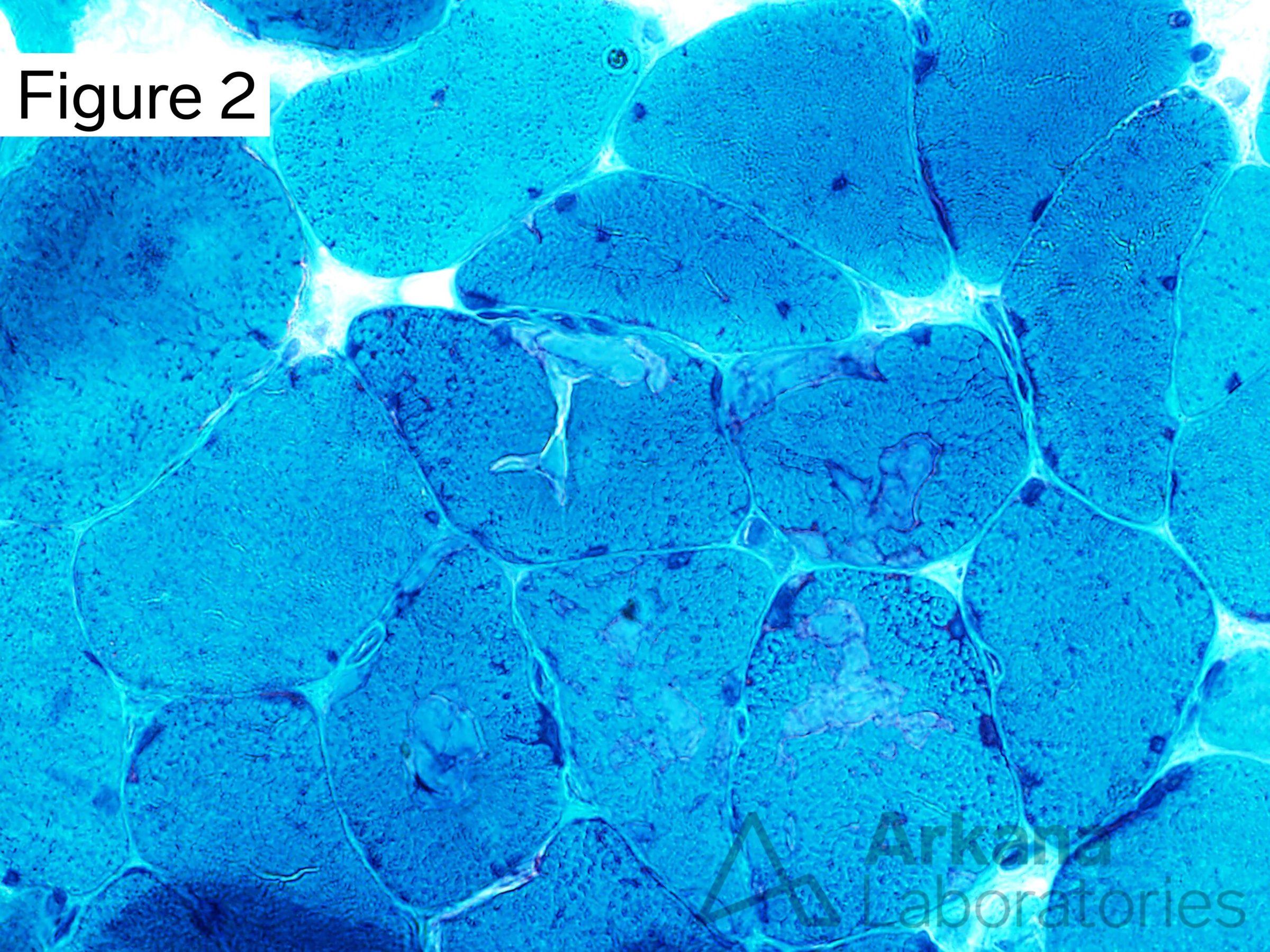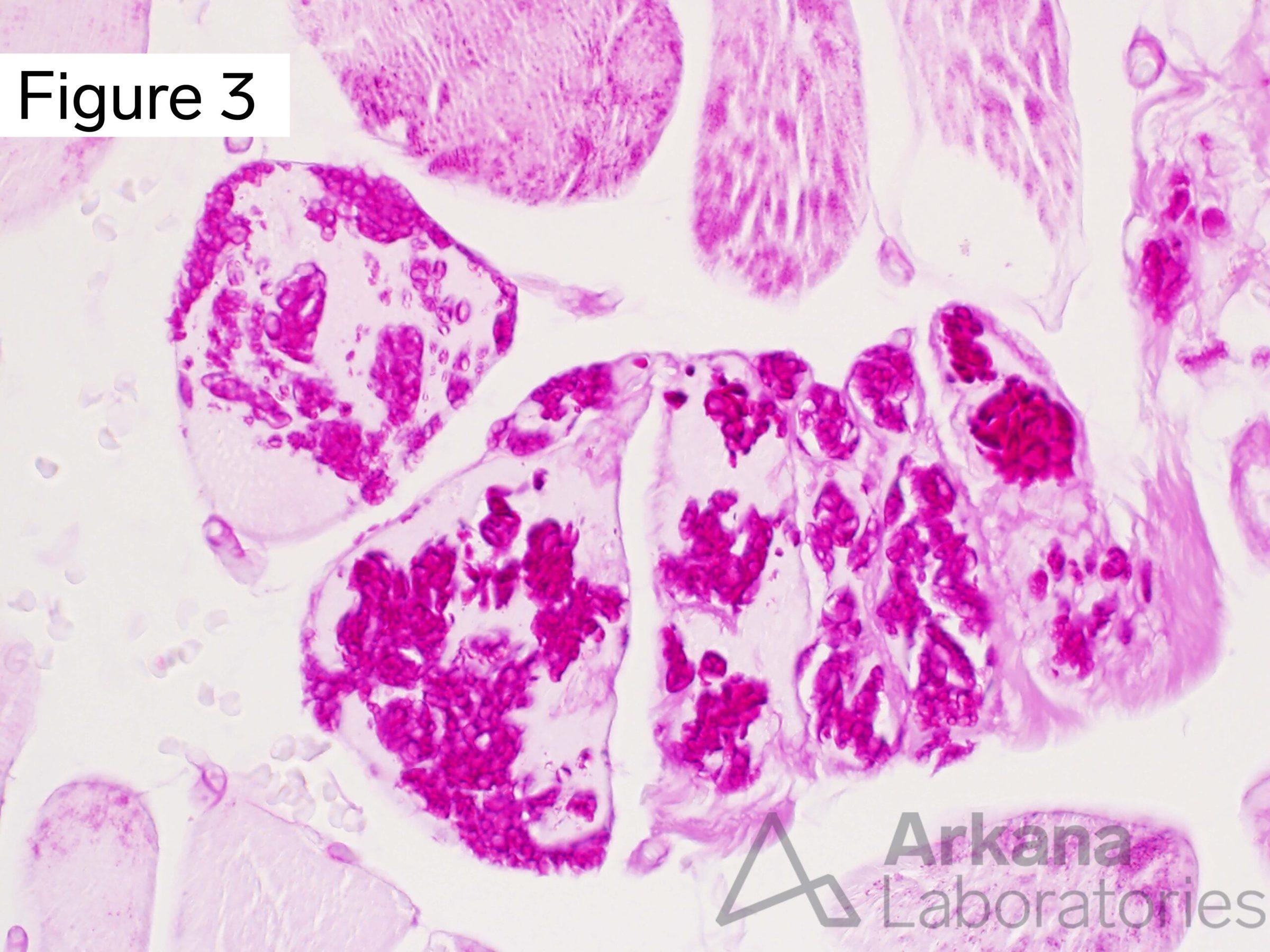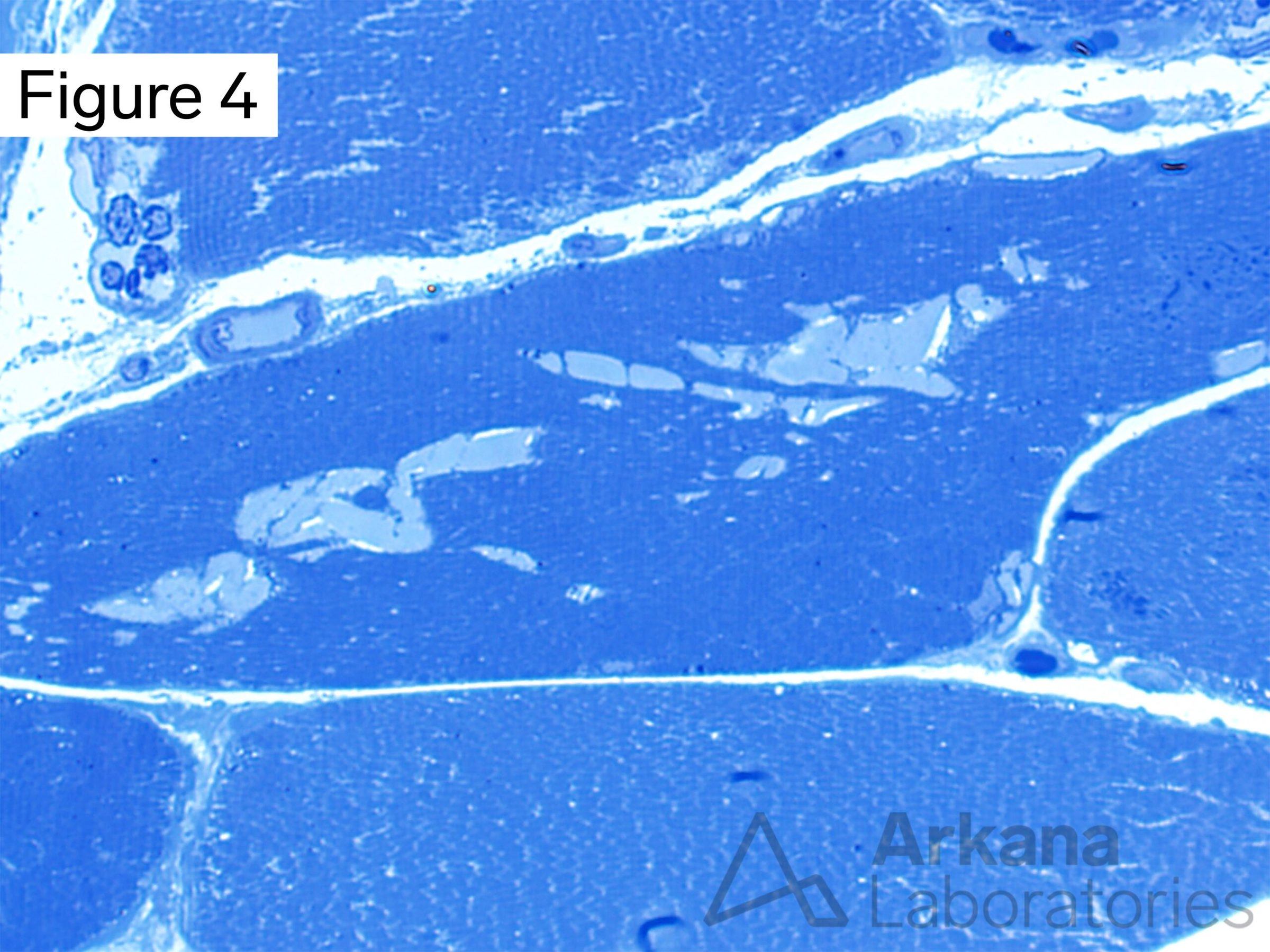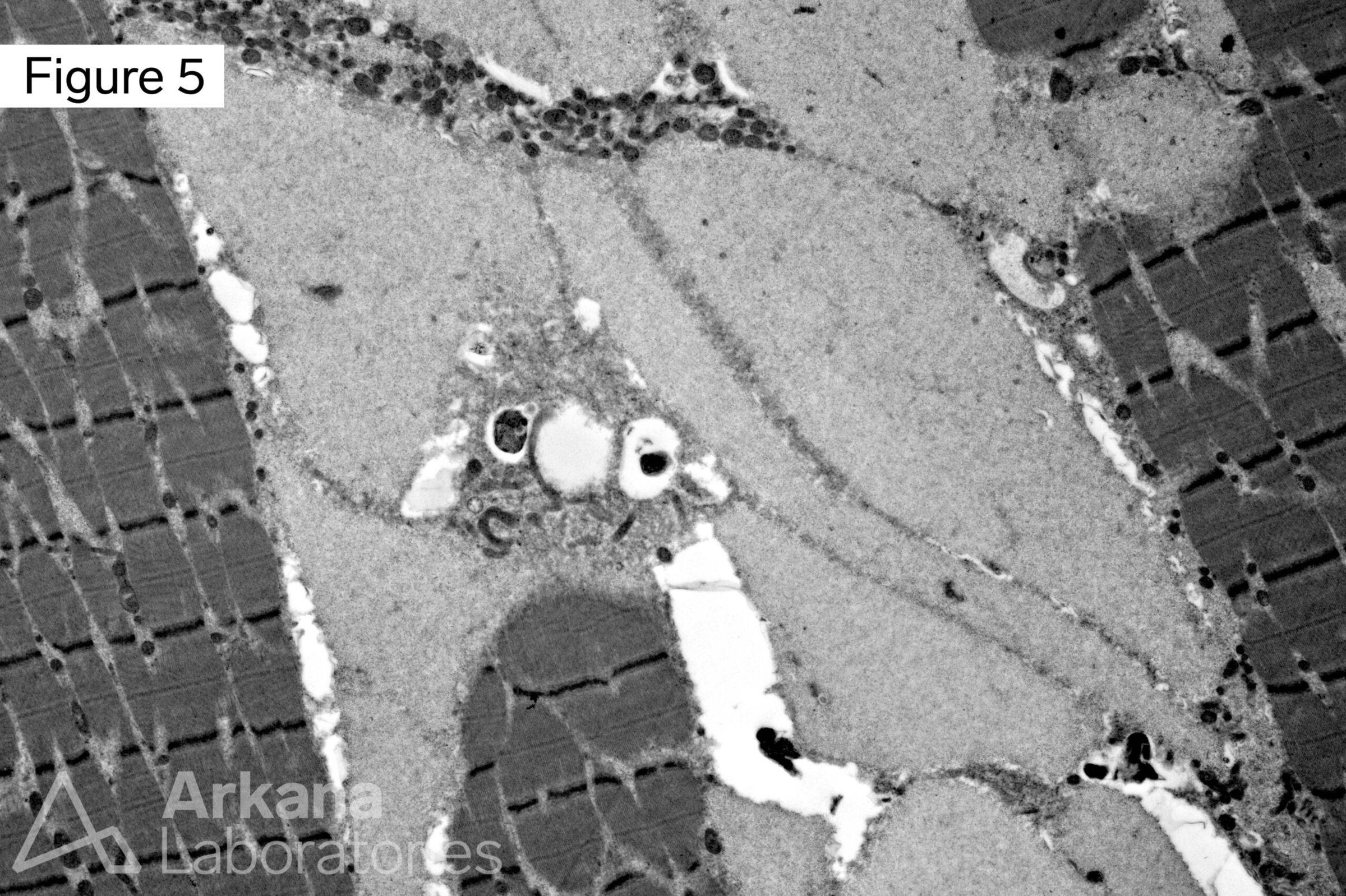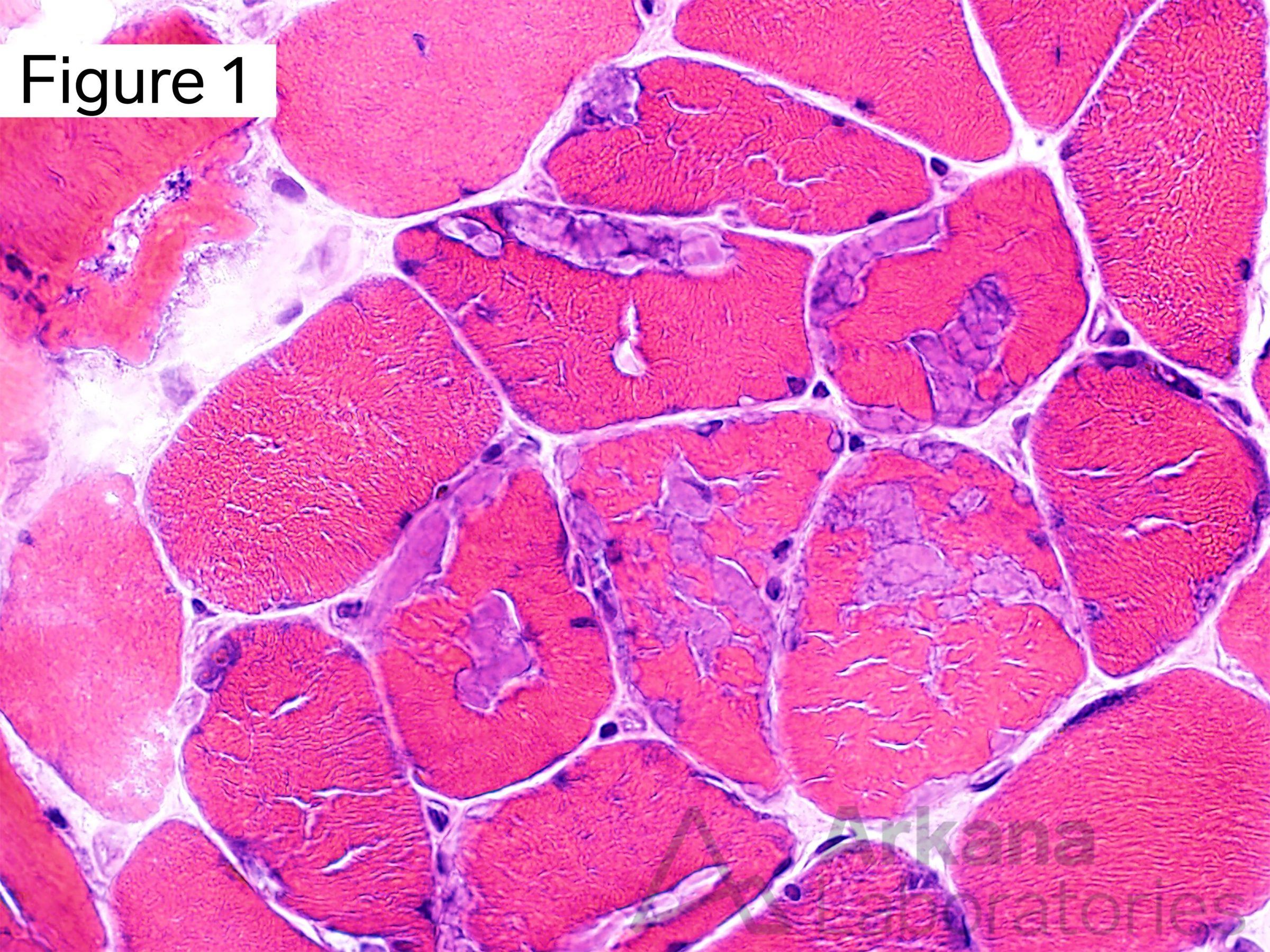
This 50-year-old patient presented with complaints of progressive leg weakness and dysesthesia (burning sensation) in a sock and glove distribution. Laboratory studies showed normal CPK and aldolase levels, negative ANA, normal vitamin B12, and folate levels. On physical examination, the patient was noted to have a wide-based gait.
What are the inclusions seen in Figures #1 – #5?
A. Polyglucosan bodies
B. Russell bodies
C. Lewy bodies
D. Marinesco bodies
Answer: Polyglucosan bodies
The PAS-positive diastase-resistant material identified in this patient’s muscle biopsy is consistent with the presence of “polyglucosan bodies.”
Accumulation of polyglucosan bodies may occur in multiple tissue types, including skeletal muscle, cardiac muscle, peripheral nerve, and brain, and maybe caused by pathogenic variants (disease-causing mutations) in multiple genes, including GYG1, GBE1, RBCK1, PFKM, EPM2A, EPM2B, PRDM8 and PRKAG2).
In the context of this patient’s clinical history, the main considerations are the autosomal recessive glycogen storage diseases:
- Polyglucosan Body Myopathy 2 (PGBM2/GSD15 caused by pathogenic variants in GYG1 gene which encodes glycogenin 1 protein: OMIM#616199)
- Neuromuscular form of Adult Polyglucosan Body Disease (APBD/GSD4 caused by pathogenic variants in GBE1 gene which encodes 1,4-alpha glucan branching enzyme 1: OMIM #232500).
Incorrect Answers
Russell bodies are cytoplasmic immunoglobulin deposits in plasma cells. Lewy bodies are abnormal alpha-synuclein-containing protein deposits seen in Parkinson disease and Lewy Body Dementia. Marinesco bodies are age-associated nuclear inclusions found in pigmented neurons of the substantia nigra and locus ceruleus that have no known pathologic significance.
References/Additional Reading
Hedberg-Oldfors C, Oldfors A. Polyglucosan storage myopathies. Mol Aspects Med. 2015 Dec;46:85-100. doi: 10.1016/j.mam.2015.08.006. Epub 2015 Aug 13. PMID: 26278982.
Nicolau S, Tracy JA, Pisapia DJ, Tanji K, Milone M. GYG1: A distal myopathy with polyglucosan bodies. JIMD Rep. 2020 May 13;55(1):88-90. doi: 10.1002/jmd2.12129. PMID: 32905144; PMCID: PMC7463053.
Cenacchi G, Papa V, Costa R, Pegoraro V, Marozzo R, Fanin M, Angelini C. Update on polyglucosan storage diseases. Virchows Arch. 2019 Dec;475(6):671-686. doi: 10.1007/s00428-019-02633-6. Epub 2019 Jul 30. PMID: 31363843.
Souza PVS, Badia BML, Farias IB, Pinto WBVR, Oliveira ASB, Akman HO, DiMauro S. GBE1-related disorders: Adult polyglucosan body disease and its neuromuscular phenotypes. J Inherit Metab Dis. 2021 May;44(3):534-543. doi: 10.1002/jimd.12325. Epub 2020 Nov 13. PMID: 33141444.
Laforêt P, Malfatti E, Vissing J. Update on new muscle glycogenosis. Curr Opin Neurol. 2017 Oct;30(5):449-456. doi: 10.1097/WCO.0000000000000484. PMID: 28737584.
Robitaille Y, Carpenter S, Karpati G, DiMauro SD. A distinct form of adult polyglucosan body disease with massive involvement of central and peripheral neuronal processes and astrocytes: a report of four cases and a review of the occurrence of polyglucosan bodies in other conditions such as Lafora’s disease and normal ageing. Brain. 1980 Jun;103(2):315-36. doi: 10.1093/brain/103.2.315. PMID: 6249438.
Quick note: This post is to be used for informational purposes only and does not constitute medical or health advice. Each person should consult their own doctor with respect to matters referenced. Arkana Laboratories assumes no liability for actions taken in reliance upon the information contained herein.
